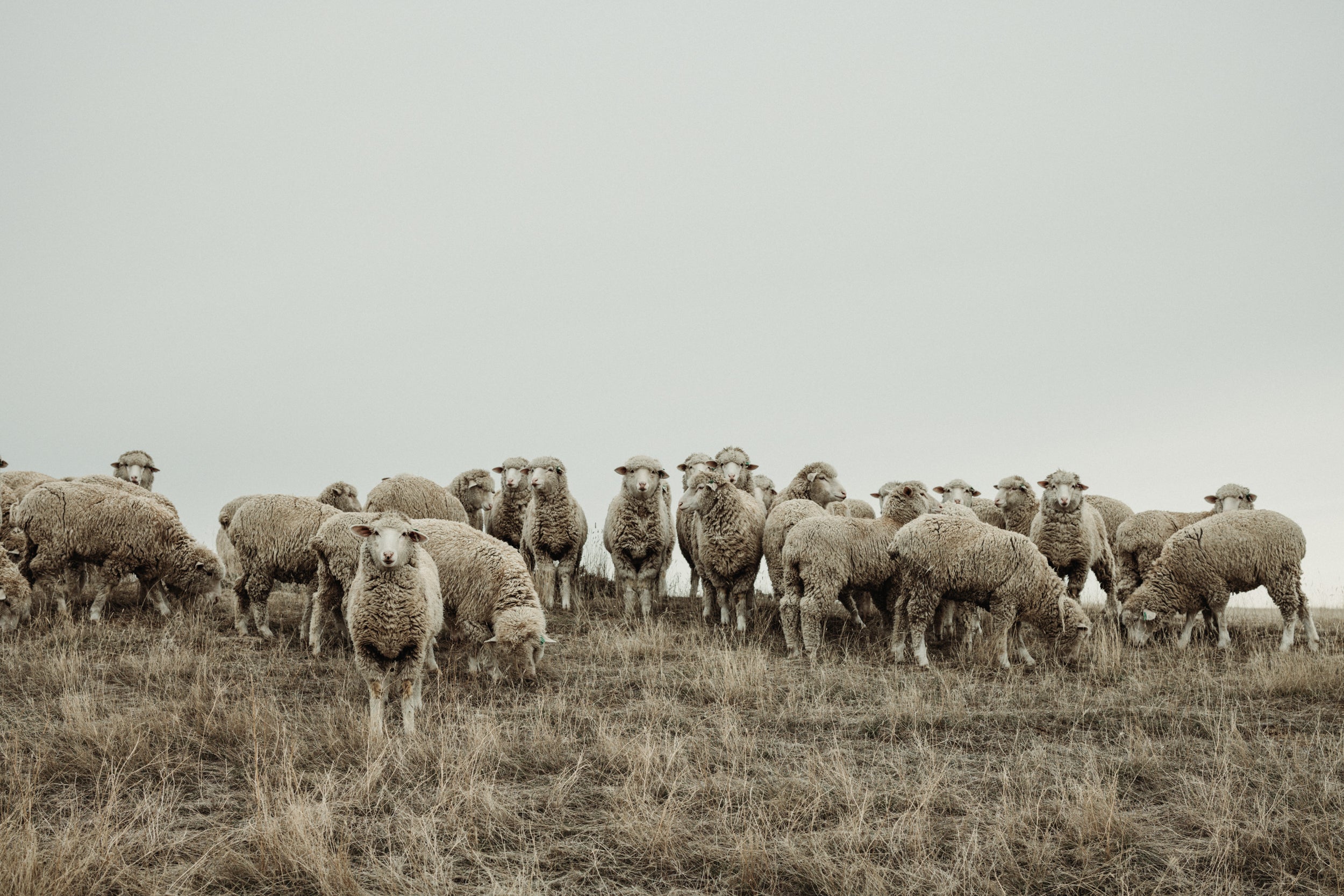WeatherWool Fabric Batches
29 July 2025 --- Ralph
We know some (I think most!) of our customers really like knowing exactly the source of the wool their garments are made from.
Also, our Ranchers love knowing the garment they are wearing is made from wool grown by their sheep. And our other Partners have similar feelings.
And we at WeatherWool really need to know the exact origins of our garments. It's basic to our company. Plus, we are always trying to improve, and our Fabric is the heart of what we do. We don't expect significant performance differences between batches of Fabric, and so far we have tried to make exactly the same -- or better -- Fabric each production cycle. But eventually it may be really important to identify the origins and processes that created any given garment.
Beginning with the Fabric made from raw fiber purchased in 2018, we have been adding Batch Tags to all our woven products.

This tag for garments in Batch 9
For those interested in the steps of production, there are other pages that may be of interest:
- Production Losses -- showing the loss (by weight) of material beginning with greasy (raw) wool and moving through finished Fabric, ready for the tailors
- Timeline --- elapsed calendar time from start to finish
- How WeatherWool is Made --- The steps of production and the people involved
The Batch Number Tags will enable us to trace:
- Ranches from which the fiber originated
- Year(s) the sheep were shorn
- Characteristics of the fiber (thickness, length, strength, yield, Comfort Factor and more)
- Who scoured the fiber
- Who dyed the fiber
- Who spun the fiber into yarn
- Who wove the yarn into griege fabric
- Who did the finishing work on the griege, creating tailor-ready "finished" Fabric
- Who marked the Fabric for any given type of garment
- Who cut the Fabric for any given garment
- Who sewed any given garment
- When a garment was completed, and how many similar garments were completed at that same time
- We will also be able to trace the origins of the "notions" in any garment (zippers, fasteners, buttons, thread ...)
I am actually hoping that, 10 years from now, none of the above matters, except as a point of interest! We are not cutting corners or holding anything back. I don't expect it will turn out that any given batch of garments or Fabric will noticeably outperform any other, but there are a lot of variables, a lot of moving parts, with art and witchcraft mixed into most of the steps. We have always pushed for max quality. But I am guessing that eventually differences will appear, and Batch Tags will enable tracking and analysis.
The Batch Number Tags are quite small, and bear only the number that specifies the Batch or sub-Batch. The Batch Number Tags are usually sewn under the size tags.
The Batches are listed from newest to oldest.
- Batch Innes-2 (Batch 14) We bought the first fiber for this Batch around May of 2025, and expect begin to make Fabric from this Batch after we buy the 2026 Innes Clip
- Batch 13 We completed purchases for this Batch in April-May of 2025. Diego at Chargeurs tells me he won't be able to process this fiber until November. This Batch is mostly from the Geis Ranch, neighbors to Innes, but also some of our old friends in New Mexico, and Padula's PM Ranch
- Batch 12: This is our first batch of YARN. That is, we sourced this yarn from Meridian Specialty Yarn Group, and we're using it to make Watch Caps and Neck Gaiters. We may also use some of this yarn for cords and cuffs. We don't attach Batch Tags to Watch Caps and Neck Gaiters, tho
- Batch Innes-1 (Batch 11) ... ALL of the fiber for this Batch comes from Innes Ranch. First time we have ever had a single-source Batch of Fabric. I want to do as much of this as possible
- Batch 10 ... Batch 10 is 100% Denim ... and of course 100% WeatherWool Certified Fine Wool Denim ... NO COTTON, NOTHING BUT WOOL
- Batch 9Y ... We had significant amounts of weft yarn left over from earlier Batches, so we took some Batch 9 warp and made batch 9Y Fabric. Relatively small amounts in True Black, Classic Brown and Drab Green
- Batch 9 ... The final test results came in around the end of July and purchases for Batch 9, our largest yet, are complete. We have completed making the Fabric. Batch 9 features some new Fabrics, such as 100% Wool Denim
- Batch 8 ... Purchased in April 2021. Because of what happened to Batch 7 (please see below) Batch 8 is now whatever is left after completing our original plans for Batch 7
- Batch 7 ... Purchased in April 2020. This fiber was caught in Hurricane Ida and we had to re-clean it, which required mixing with Batch 8. We got that all straightened out, except that the fiber for Batch 7 and 8 were mixed. Other than that, Batch 7 went as planned! -- HA
- Batch 6 ... Purchased October 2019. Has been made into MidWeight Drab and MidWeight Lynx Pattern Fabric, and much of the Fabric has been made into Anoraks. We also made CPO Shirts and Hooded Jackets in the 2nd quarter of 2022
- Batch 5 ... Purchased April 2018 and Fabric completed in early 2021. All Batch 5 fiber has been made into garments. Mostly Anoraks and All-Around Jackets.

